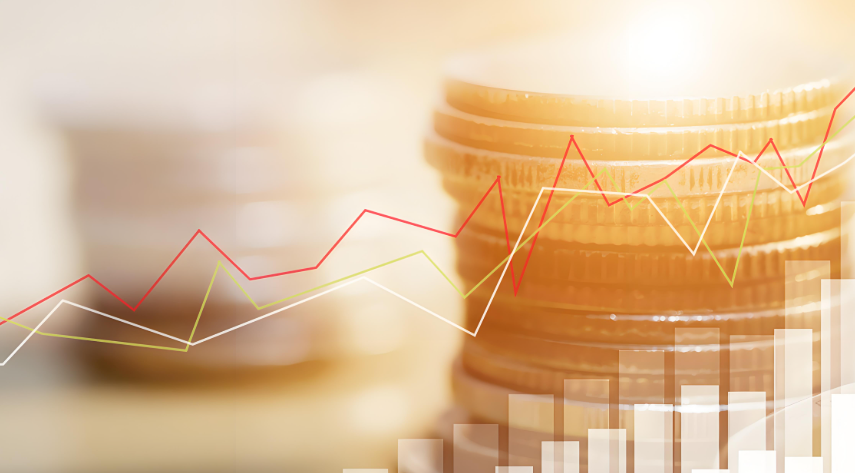U.S. Stocks Soar Across the Board
Advertisements
On a bright and optimistic Thursday in the Eastern Time Zone, the U.S. stock market saw all three major indices celebrating a collective rise, showcasing the resilience and vitality of technology stocks. The S&P 500 Index not only reclaimed its position above the 6100 points but also sparked interest among investors amid ongoing discussions concerning the United States' proposed tariff policies.
The closing numbers were promising: the Dow Jones Industrial Average gained a healthy 342.87 points, marking an increase of 0.77%, resting at 44,711.43. Meanwhile, the S&P 500 closed at 6,115.07, reflecting a solid gain of 1.04%. The tech-heavy Nasdaq Composite Index surged even more dramatically, jumping an impressive 1.50% to finish at 19,945.64.
On February 13, 2024, the U.S. government announced a bold strategy to impose “reciprocal tariffs.” This means that the U.S. plans to match tariffs imposed by its trading partners, stirring debates on international trade dynamics. Furthermore, they hinted at enforcing additional tariffs on countries that utilize a value-added tax system, showcasing an aggressive approach toward trade negotiations.
While the effective date of these measures has yet to be disclosed, experts warn that the implementation process might stretch across several weeks or even months. Abhurin, the Chief Investment Officer at Klesat Capital, commented on this development, stating, “Investors are bracing for potential inflation that might stem from these tariffs.” This sentiment reflects a broader concern regarding inflationary pressures that could ripple through the economy.
Interestingly enough, the U.S. Bureau of Labor Statistics reported that the Producer Price Index (PPI) for January registered a year-on-year increase of 3.5%, surpassing the market expectation of 3.2%. This marked the largest increase since February 2023, further highlighting the signs of inflation returning to the economy. Additionally, the month-on-month PPI rose by 0.4%, again higher than the anticipated figure of 0.3%.
The reaction from the market was immediate and vocal, with short-term U.S. interest rate futures climbing, as traders began to wager on potential interest rate reductions in July, while higher expectations emerged for cuts in September. Just a day earlier, surprising data showed the Consumer Price Index (CPI) rising to 3% year-on-year in January, beating prior forecasts of 2.9%, catching many economists off guard.
Bloomberg Economics has been vigilant in tracking these inflation trends and recently conducted a detailed analysis. They observed that January saw an unexpected uptick in inflation, which might dampen expectations for rate cuts early in the year. However, they emphasized that this inflation spike is largely influenced by seasonal factors. While current data indicates rising inflation, forecasts suggest a slight cooling by the end of 2025. Bloomberg also noted that companies typically adjust prices at the beginning of the year; thus, seasonally adjusted data may somewhat exaggerate inflationary pressures, prompting both investors and policymakers to consider a range of factors.

During an economic symposium on Wednesday, Federal Reserve Chairman Jerome Powell urged participants to refrain from overanalyzing single-month inflation data, highlighting the importance of looking at inflation trends from a long-term perspective. Supporting this viewpoint, Dickson, the global macro strategist from State Street Global Markets, conducted a close analysis of specific PPI components, suggesting that the true state of core PCE inflation might not be as robust as the CPI suggests—a refreshing perspective that adds depth to the ongoing discussions around inflation.
Sector performance across the S&P 500 showed a universal uptick, with all 11 sectors closing in the green. The materials sector led the charge with a 1.71% increase, closely followed by the consumer discretionary sector, which gained 1.6%. This broad-based rally demonstrates the market's confidence despite the chatter around tariffs and inflation.
Tech giants particularly shone in this arena. Intel saw its stock price soar over 7%, reaching its highest closing point since December 2023, signaling robust growth within the industry. Tesla also enjoyed a commendable rise of over 5%. This was particularly fueled by media reports suggesting that the U.S. government intended to allocate $400 million toward procuring “armored” electric vehicles from Elon Musk’s company. Although this information was later retracted by the U.S. State Department, it still captured the market's attention. Additionally, Nvidia enjoyed an uptick of more than 3%, reaffirming its influential status in the tech sector. Apple also climbed close to 2%, following CEO Tim Cook's intriguing post on social media X, teasing an upcoming product announcement on February 19, which has set many speculation wheels in motion regarding Apple’s next big release.
On the individual stock front, MGM Resorts International experienced a staggering increase of 17%, buoyed by stronger-than-expected fourth-quarter earnings. Conversely, advertising technology firm Trade Desk faced a harsh reality as its revenue guidance failed to meet expectations, resulting in a dramatic 33% plunge in its stock price. Chevron also made headlines with its announcement of a global workforce reduction plan affecting 20% of its employees, leading to a minor uptick of 0.6% in its stock value.
The commodities market painted a somewhat mixed picture; international oil prices saw slight declines, with West Texas Intermediate (WTI) crude dipping 0.11% to settle at $71.29 per barrel while Brent crude closed at $75.02 per barrel. However, a prevailing sense of risk aversion lifted COMEX gold futures by 0.57%, ultimately settling at $2,945.40 per ounce.
post your comment